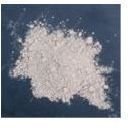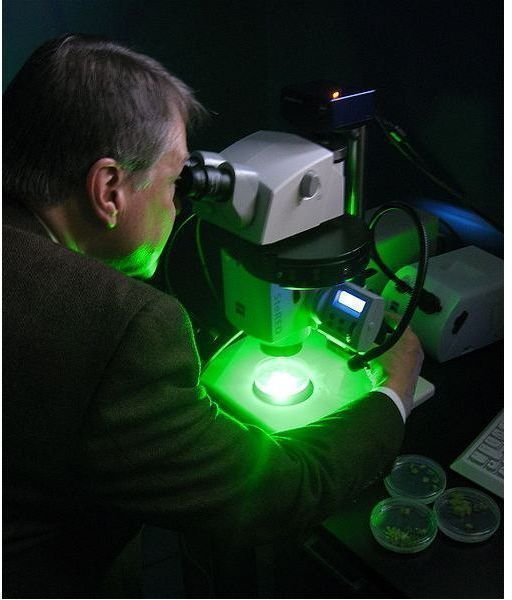Understanding Soil Microbes & Farming Practices: The Effects of Fertilizers on the Soil Microbial Communities
What are Soil Microbes?
Theoretical advances pertain to studies that made use of both theories and experiments in determining the effects of fertilizers on soil microbial communities. These studies provide us with information on how the soil’s ecosystem reacts to the effects of long term farming practices. Reports tell how long term fertilization diminishes soil quality as it affects the soil microbes that produces nutrients needed for plants growth.
According to science experts, microbes are important because they are practically amidst every biological process that takes place here on Earth. Plants and animals including humans deal with microbes because microbial activities often result to chemical conversions of the Earth’s elements.
Soil microbes are the living organisms that thrive and subsist in the soil’s natural matters. As part of their microbial activities, they will release the nutrients contained in organic matters back to the soil, to be used by plants during vegetation processes. There is also reference to soil microbial biomass**,** which is the measurement of individual bacterial cells in relation to dry organic matter. The amount of the living microorganisms or the measure of soil microbial biomass influences the quality of the soil and everything that thrives or flourishes in it.
How Soil Microbes Enhance Soil Quality

As an example, the earthworms we love to hate are actually important because their abundance in the soil is an indication of positive soil health. Studies conducted on soils where plants like asparagus or eggplants which are known to be susceptible to certain soil borne diseases, were able to vegetate with more success when the soil was augmented with earthworms.
Plant diseases that cause growth curves, root lesions and stem discolorations were reduced by 50% up to 70% when more earthworms were added to the soil. Correspondingly, plant weight increased by as much as 60% to 80%. These studies therefore suggest that the presence of earthworms increased microbial activities that produced positive agricultural results.
Soil bacteria produce sticky substances that contain the nutrients and these same sticky substances will act as protective coatings in the plants’ roots, as defense against plant pathogens or the disease causing bacteria. This then, enables the roots to function properly by providing more nourishment to the plant. In addition, these sticky substances are said to attract more organisms that prey on pathogens or disease-causing microbe, thereby lessening soil borne diseases.
Agriculture makes use of different crop management methods and enhancing the soil through earthworm augmentation is only one of those methods.
Three Different Types of Soil Fertilizers

There are three different types of fertilizers being used on soil via farming practices, namely: Chemical Fertilizers, Organic Fertilizers and Biofertilizers. Let us try to understand how each of these fertilizers works, in order to fully grasp how their long term application, affects soil microbial activity.
Chemical Fertilizers
Arable lands or soil considered fit for growing crops, contain natural nutrients. However, these nutrients are not readily available to the plants since they are being released in small portions through soil microbial activities. Once the soil nutrients are absorbed by the plants, it will take some time before they can be replaced. The soil depends on the availability of organic matter that microbes feed on, which subsequently produces the nutrients these organisms release to the soil. This process is said to be slow, and could not meet the rate by which agricultural production uses up soil nutrients.
Chemical fertilizers can augment the arability of the soil by providing specific nutrients highly needed by the crop in vegetation. The three important soil organic nutrients found in arable lands are Nitrogen (N), Phosphorus (P) and Potassium (K) collectively called as NPK. Each of these nutrients plays an important role in a plant’s different stages of growth and development.
By adding synthetically produced nutrients in the form of chemical fertilizers like urea, potassium chloride, potassium sulfate, gypsum and dia-ammonium phosphate, plants are supplemented with nutrients that are soluble and readily available for their absorption. Chemical fertilizers became widely used because they provided the solutions in accelerating agricultural production for a relatively low price. Since a small portion of fertilizer contained a great concentration of nutrients, it was very cost effective in relation to the quantity of crop produced.

Organic Fertilizers
The use of organic fertilizers using animal manure, municipal solid wastes (MSW), composts, crop residues and green manure, was a way of enhancing soil quality by natural means. Instead of directly adding the synthetically manufactured nutrients to the soil, organic fertilizers presented the option of adding more organic matters and microbes to the soil.
The more organic matter available the more nutrients will be released for plant use because soil microbial communities tend to flourish in this kind of environment. Organic fertilizers will also introduce new microbial communities that will perform other microbial activities in a particular soil or land.
Biofertilizers
Biofertilizers are made from live bacteria and fungi of the beneficial kind, Azolla, Azotobacter, Azospirillum, cyanobacteria (blu-green algae), phosphobacteria, Sesbania and a lot more. These microbes convert atmospheric nitrogen into nitrates that can be readily used by the plants.
Phosphorus on the other hand will harness the soil content by making it more soluble. Biofertilizers are not the same as chemical fertilizers where synthetic nutrients are directly supplied. It is also different from organic fertilizers, in which the nutrients derived are not specific and amounts vary randomly. Proponents of biofertilizers claim that this is the ultimate solution. However as of this date, there is still no clamor for biofertilizers in the agricultural market.
The Effects of Long term Application of Chemical Fertilizers on Soil Biomass Community

Chemical Fertilizers- Long term application of chemical fertilizers resulted to “fertilizer burn” where there was too much of everything. In fact, researchers measure the degradation of soil and its organic compound by studying the changes in the soil microbial biomass.
Too much nitrogen coming from the nitrate and ammonium content of fertilizer created an acidic environment for the microbial community. Soil microorganisms thrive on land that they consider suitable for their growth. Too much acid in the soil caused microorganisms to transfer elsewhere, leaving the plants at the mercy of pathogens or disease carrying bacteria.
In fact, too much nitrogen content encouraged certain plant pests to flourish and multiply to the point of overpowering the beneficial bacteria in the soil microbial community. Sometime in the past wherein chemical fertilizers were newly introduced, there were significant crop destructions taking place due to pest and insect invasions.
Researchers later found out that the upset in the natural balance of the soil had caused the loss or reduction of soil microbial communities. There were less of the sticky substances used as protection against soil borne diseases while soil microbial communities retreated into the recesses of the soil to look for more suitable habitats.
Organic Fertilizers- As opposed to Chemical Fertilizers, Organic Fertilizers increased biomass activity and the positive effects of microbial activities on both soil and land. The presence of more organic matters encouraged the growth and existence of more microbial communities, which suppressed the occurrence of plant diseases.
Nonetheless, the use of organic materials as fertilizers should be approached with caution, particularly compost and Municipal Solid Wastes (MSW). The quality of good organic fertilizer should consider the absence of heavy metal contents or other organic pollutants that will produce adverse results through repeated applications. It is important that the compost or MSW used will enhance soil organic matter and propagate soil microbial communities.
Biofertilizers- This type of soil augmentation is considered as harmless and will not result to “fertilizer burn”. The fertilizers are made up of live microorganisms that will immediately act to release nutrients found in the soil. Handling and application however, requires knowledge about the limitations of its use. First off, biofertilizers and chemical fertilizers including pesticides or herbicides should not be combined. In addition, the use of biofertilizer should be a part of a whole agricultural system that relies only on things or supplements that are organic.
To date, assessments of long term effects of its application are still lacking. Farmers have been provided with limited knowledge regarding its use, since certain technological issues still need to be threshed out.
As we get to understand more about soil microbes and different farming practices, the deeper our understanding of how the environment works. However it also comes with the knowledge that land became degraded. Nevertheless, there is also the matter of appreciating present-day efforts to rehabilitate our resources.
Reference Materials and Image Credit Section
https://www.agnet.org/library/tb/174/
https://attra.ncat.org/attra-pub/soilborne.html#why_compost_works
References:
- https://www.basic-info-4-organic-fertilizers.com/whatisorganicfertilizer.html
- https://www.springerlink.com/content/77nlr6162v130246/
- https://apsjournals.apsnet.org/doi/abs/10.1094/PDIS-93-2-0175
- https://books.nap.edu/openbook.php?record_id=11902&page=12
- https://infoscience.epfl.ch/record/133599
Images Credit:
- Images courtesy of Wikimedia Commons
